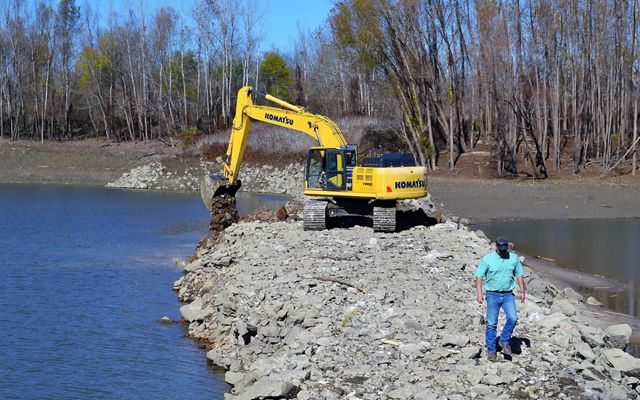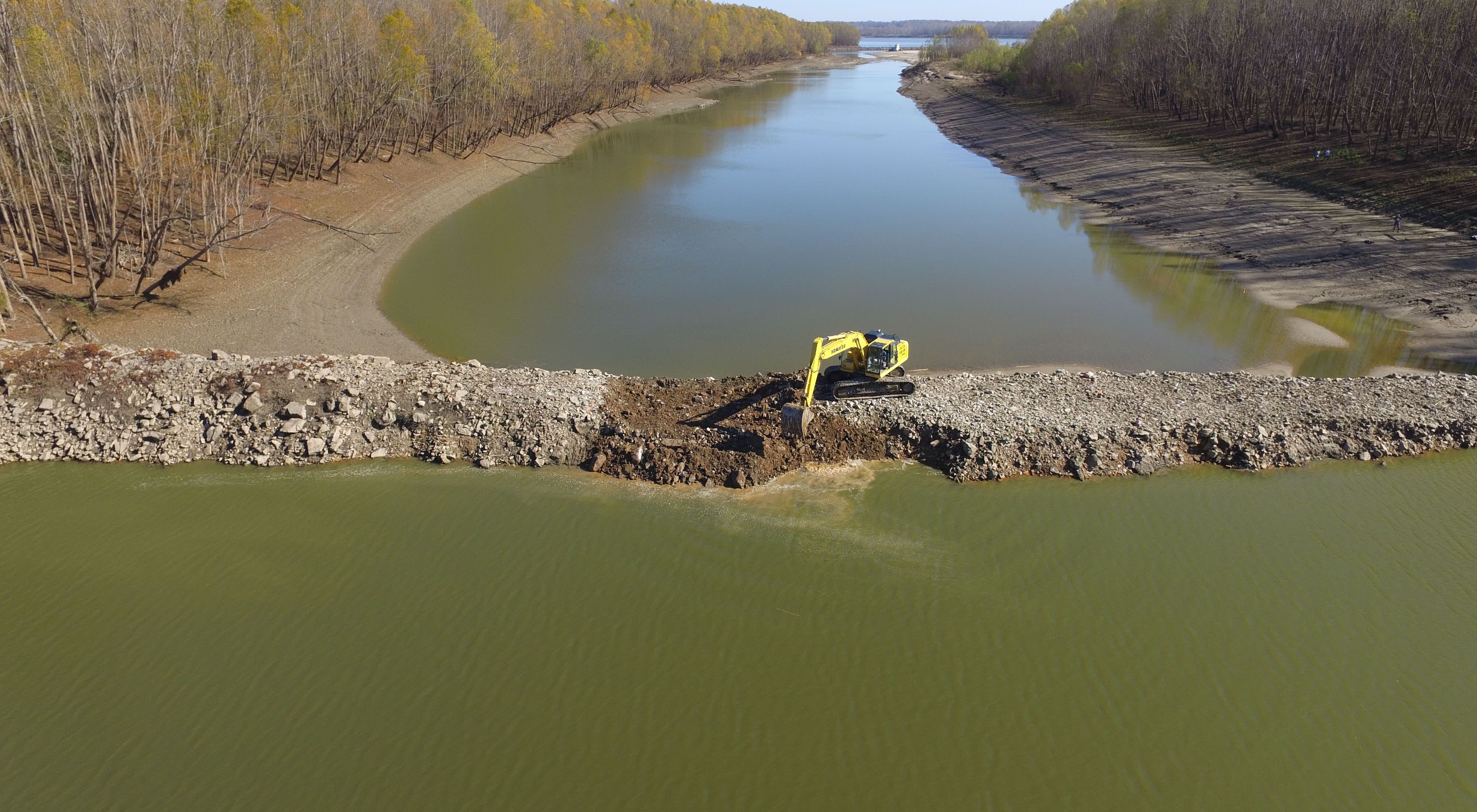Digging In
Sometimes it takes a backhoe to complete a restoration project, and that’s exactly what The Nature Conservancy’s Mississippi Chapter used to reconnect historic channels back to the Mississippi River. This past December, the Conservancy dispatched heavy equipment operators to cut notches into large rock dikes along Coffee Point, ultimately reconnecting more than 3.5 miles of river channel.
These dikes were originally designed to divert flow to the main channel of the Mississippi River for navigation and flood-control purposes. However, when the river was down, the dikes cut off flow to the channel. Without this flow, the side channel lost its ability to maintain the critical habitat that these areas provide. TNC cut into three dikes, creating notches 100 feet wide and 10 to 16 feet deep.
The restored flow will improve water quality and habitat for several fish and bird species, including several threatened and endangered species: the pallid sturgeon, the fat pocketbook mussel and the interior least tern.
Quote: Scott Lemmons

We removed an estimated total of 5,400 tons of stone. It’s as good a bang-for-your-buck conservation project as you can do."
A Model for Future Projects
The project represents a partnership between The Nature Conservancy, the U.S. Army Corps of Engineers and the Lower Mississippi River Conservation Committee, who identified Coffee Point as one of several dike fields along the Lower Mississippi that would benefit from this type of restoration. The Army Corps of Engineers issued the permit and designed the restoration—where to cut the notches and how deep. According to Scott Lemmons, the chapter’s director of Freshwater Programs, this collaborative model for restoration proved to be very successful. “Moving forward,” he says, “we all know what we have to do to get the job done.”
Now that flow has been returned to the side channels, the U.S. Army Corps of Engineers’ Research Development Center in Vicksburg is monitoring flood pulses and flows through the notches. The channel will deepen, and more freshwater will flow through it. “That’s three and a half miles of fish habitat we’d lose,” says Lemmons. “Not anymore.”
Early monitoring from the U.S. Army Engineer Research and Development Center already show success. “Species diversity has greatly increased in the ten months since the restoration," says Lemmons. "We are seeing several species of freshwater turtles, blue and flathead catfish, freshwater shrimp, and a few species of freshwater mussels native to the Lower Mississippi." Surveys this past spring even pulled multiple samples of pallid sturgeon, a threatened and endangered species, from the restored Coffee Point side channel.
